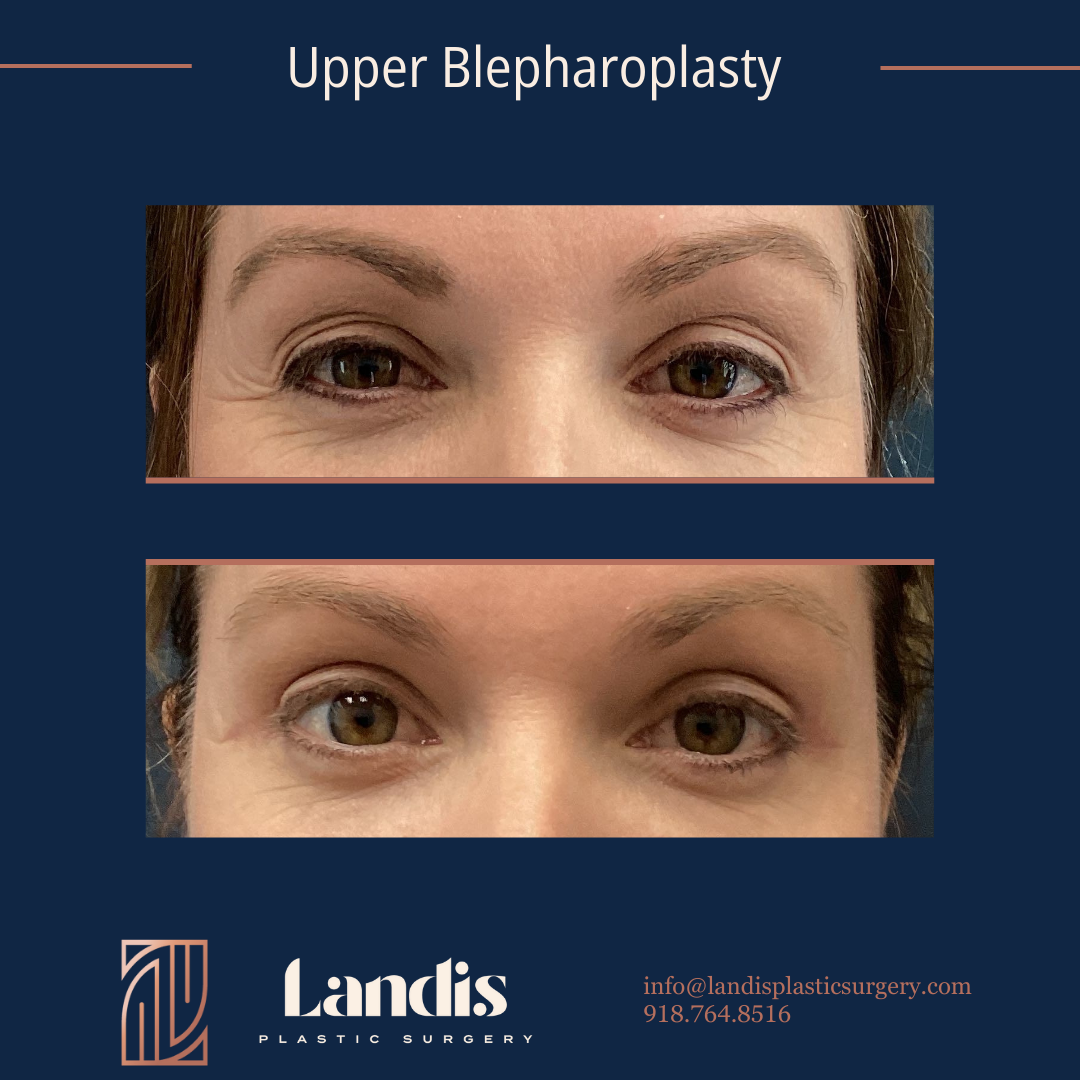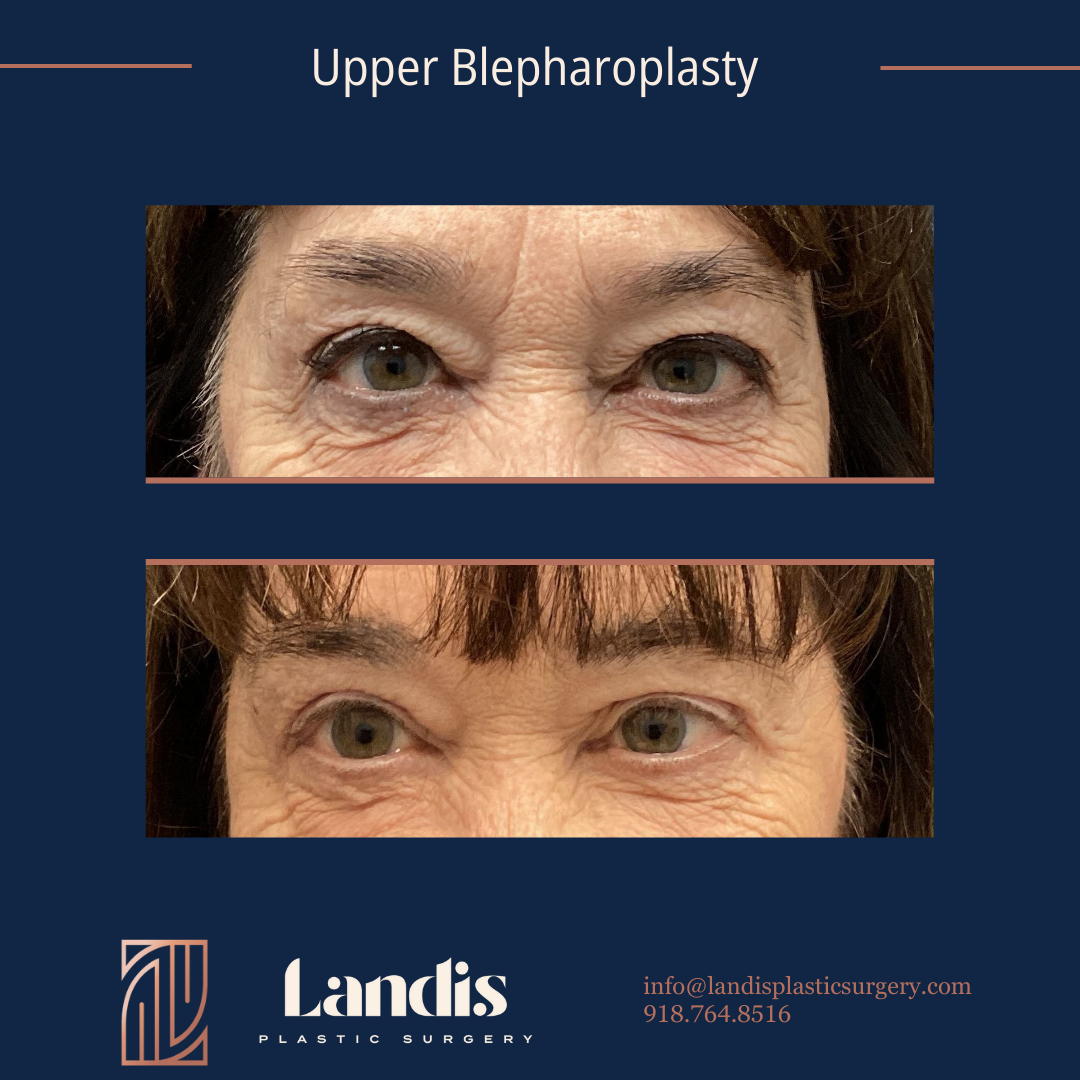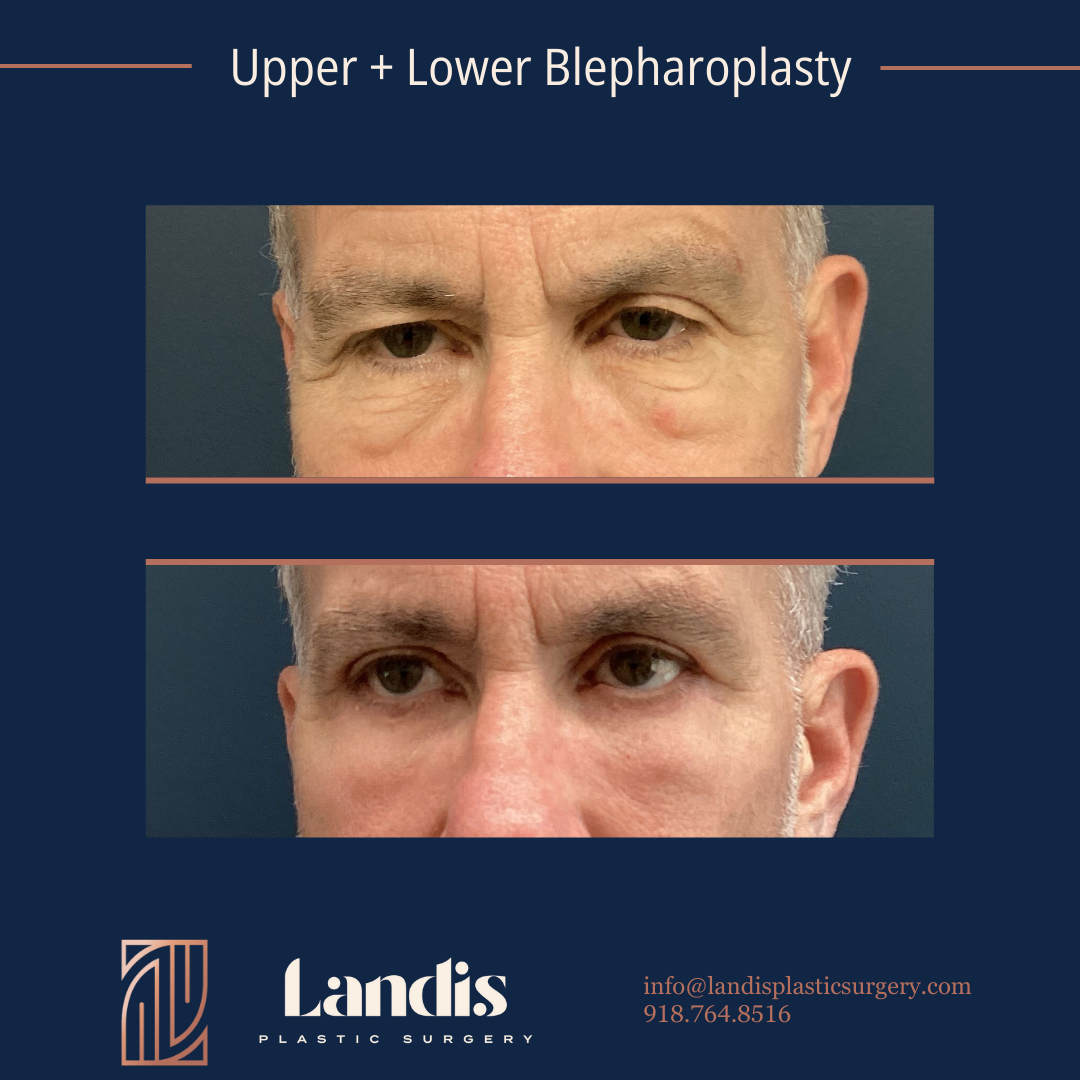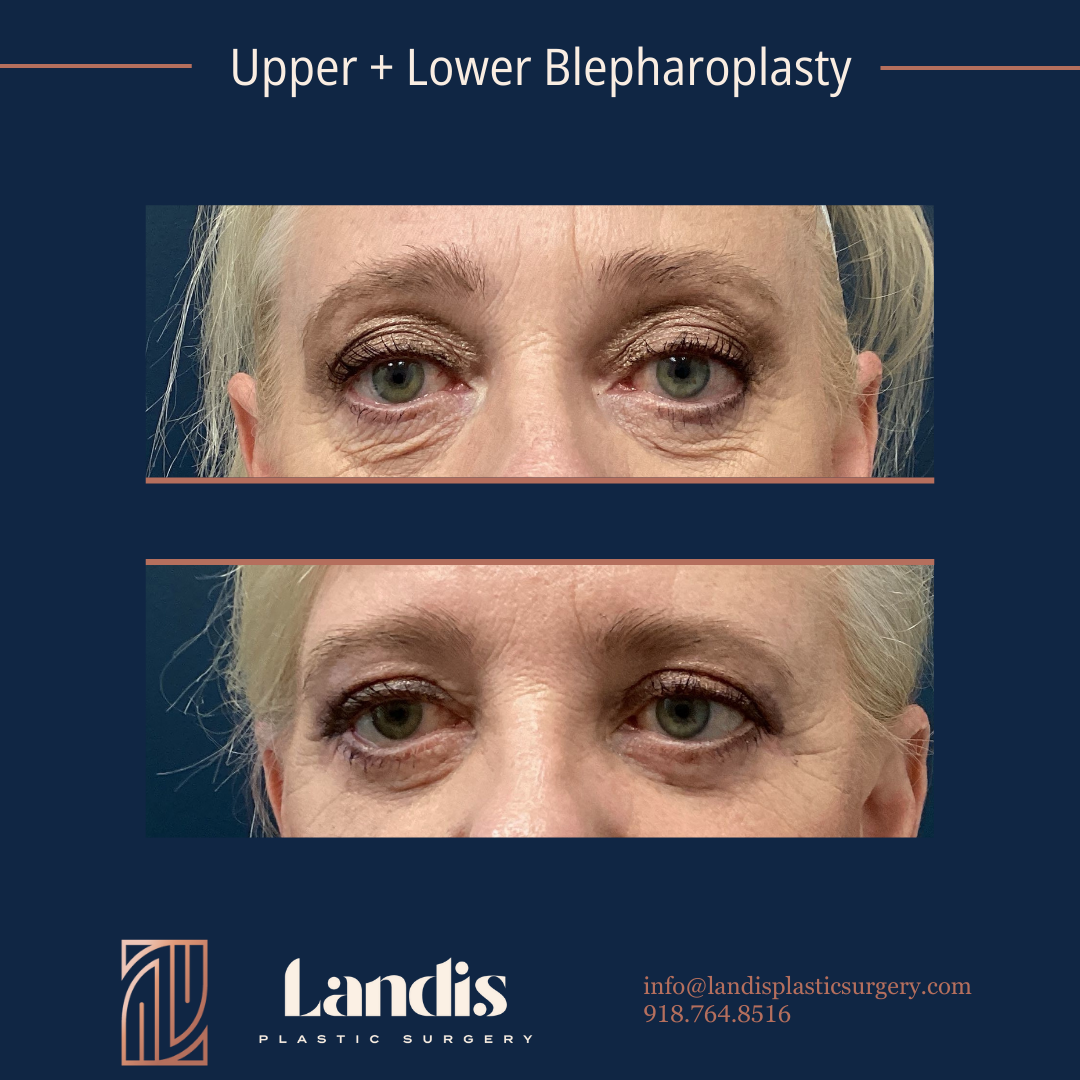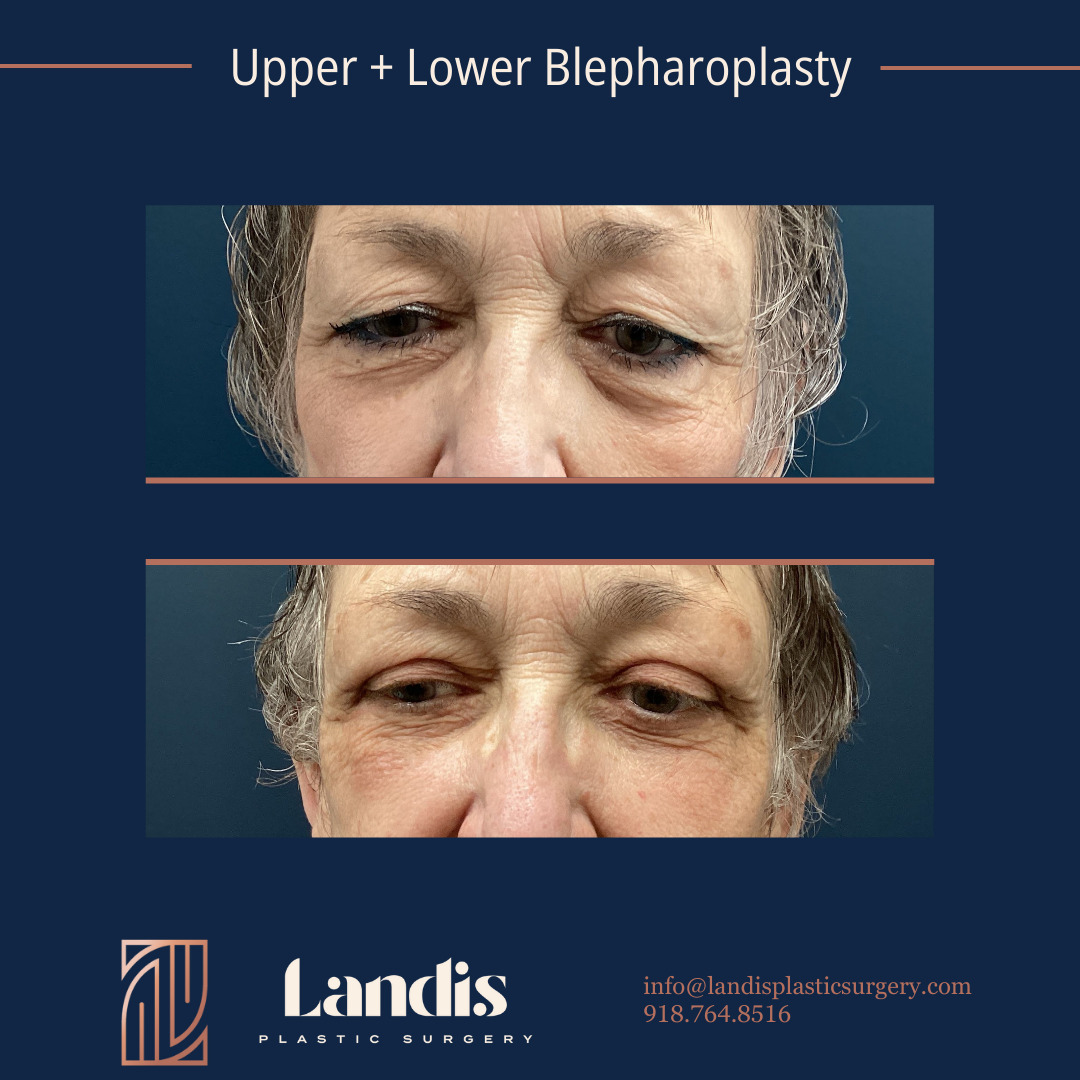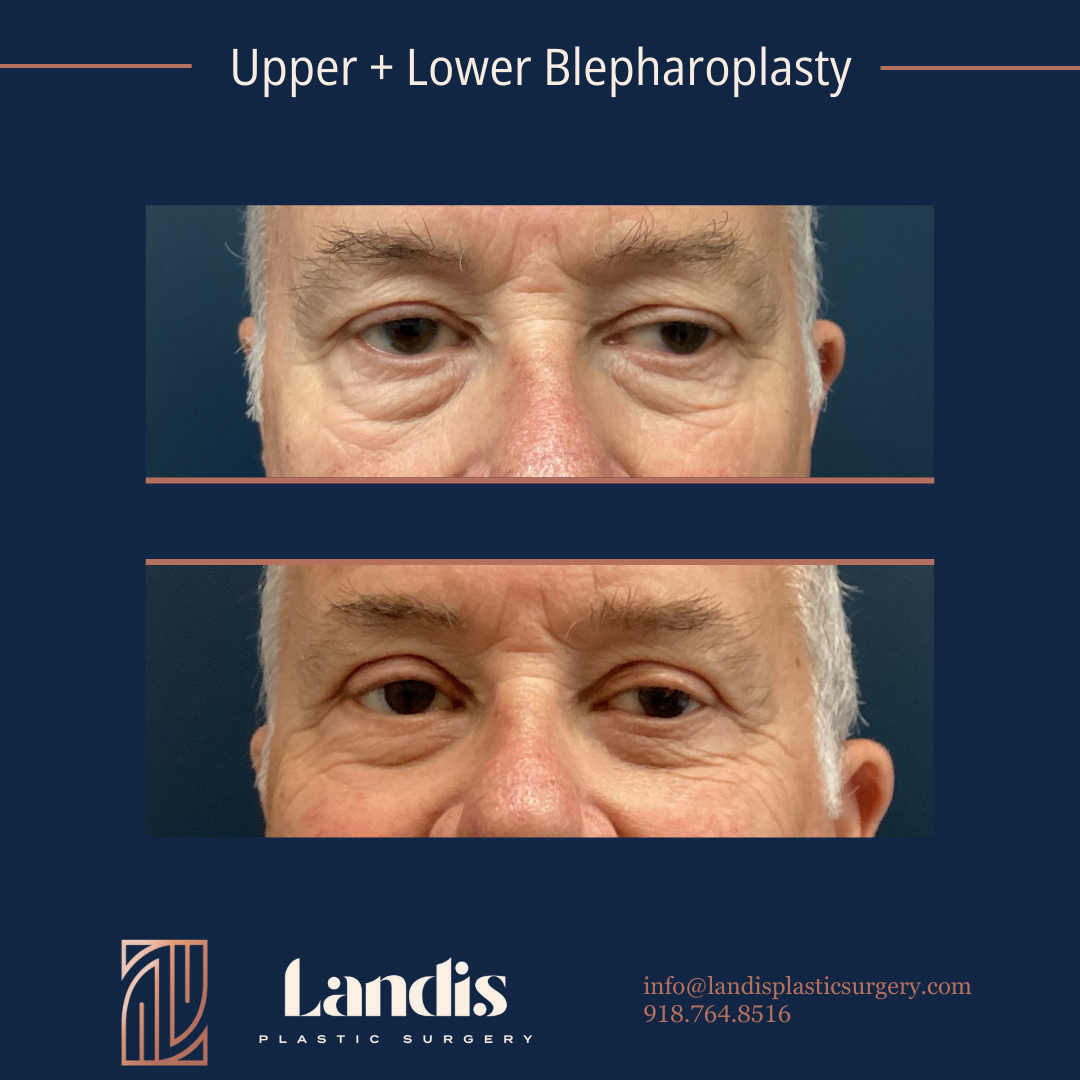Other Procedures
Upper Blepharoplasty
Otoplasty
Lower Blepharoplasty
Lip Lift
Face Lift
SkinPen
Neck Lift
Injectables
Breast Augmentation
Breast Re-Augmentation
Breast Lift
Breast Augmentation + Lift
Breast Reduction
Breast Implant Removal
Breast Implant Removal + Lift
Breast Reconstruction Revision
Revision Breast Surgery
Breast Fat Grafting
Nipple Procedures
Gynecomastia Surgery
Mommy Makeover
Liposuction
Thigh Lift
Arm Lift
Abdominoplasty
Fleur-de-lis Abdominoplasty
Labiaplasty
Body Contouring
Scar Revision
Skin Lesion Removal
Other Procedures
Upper blepharoplasty, also known as upper eyelid surgery, is a cosmetic procedure that aims to improve the appearance of the upper eyelids. It involves removing excess skin, fat, and muscle from the upper eyelids to create a more youthful and rejuvenated appearance. Upper blepharoplasty can address concerns such as drooping eyelids, excess skin, and puffiness, resulting in a more refreshed and awake look. Heavy upper eyelids often are genetic and many younger patients benefit from this procedure as well.
Reasons for Upper Blepharoplasty:
- Have excess skin on the upper eyelids: Aging can cause the skin on the upper eyelids to become loose and saggy, creating a tired or aged appearance. Upper blepharoplasty can remove this excess skin, restoring a more youthful and refreshed look.
- Experience drooping eyelids: Drooping eyelids, known as ptosis, can obstruct vision and make daily activities such as reading or driving more challenging. Upper blepharoplasty can lift the eyelids and improve vision, enhancing both function and aesthetics.
- Have puffy or bulging upper eyelids: Excess fat deposits can accumulate in the upper eyelids, causing puffiness or a “baggy” appearance. Upper blepharoplasty can remove these fat deposits, resulting in a smoother and more defined eyelid contour.
Procedure:
Upper blepharoplasty is performed under general anesthesia. This ensures the patient is asleep and comfortable during the procedure. The procedure typically takes 1 hour. Dr. Landis will make incisions along the natural crease of the upper eyelids. These incisions are strategically placed to minimize scarring and ensure optimal results. Excess skin, fat, and muscle are carefully removed or repositioned to create a more youthful and refreshed appearance. Dr. Landis will also tighten the underlying muscles and tissues to improve eyelid contour and support. The incisions are closed with sutures and ointment is applied to promote healing.
Recovery and Aftercare:
The recovery period for an upper blepharoplasty will vary from patient to patient. You will be given specific instructions on how to care for your incisions, including keeping them clean and applying prescribed ointments and eye drops as directed. Patients can expect some discomfort, swelling, and bruising after surgery. Swelling and bruising around the eyes are common after upper blepharoplasty- the eyelids have an abundant blood supply! Applying cold compresses (bags of frozen peas) and keeping your head elevated will help reduce swelling and promote healing. A low dose pain medication will be prescribed to manage any post-operative pain. A few non-dissolvable sutures are used, and they will be removed within a week after surgery during a follow-up appointment with Dr. Landis.
It is important to follow Dr. Landis’ post-operative instructions regarding incision care, medication, and activity restrictions. Most patients can resume normal activities, including work and light exercise, within a week after surgery. Strenuous activities and heavy lifting should be avoided for 3 weeks. It is crucial to attend follow-up appointments with Dr. Landis to monitor the healing process and address any concerns.
Potential Risks and Complications:
While upper blepharoplasty is generally considered safe, it is important to be aware of the potential risks and complications associated with the procedure. These may include:
- Infection
- Bleeding
- Dry eyes
- Tearing
- Temporary blurred vision
- Scarring
- Asymmetry
- Difficulty closing the eyes completely
Dr. Landis will discuss these risks with you and address any concerns or questions you may have before deciding to undergo upper blepharoplasty.
Cost:
Upper blepharoplasty cost includes the surgeon fee, facility fee, anesthesia fee, and any labs or imaging that may be required before or after surgery. The total cost for an upper blepharoplasty ranges from $3,800 -$5,000 and varies if any additional surgery is required. Dr. Landis will formulate a plan specific for each patient and a detailed estimate will be provided. CareCredit is available to our patients, and we’d be happy to discuss this option with you!
Conclusion:
Upper blepharoplasty is a cosmetic procedure that can enhance the appearance of the upper eyelids, resulting in a more youthful and refreshed look. It is important to consult with a qualified, board-certified plastic surgeon like Dr. Landis to determine if upper blepharoplasty is suitable for you and to discuss your goals, expectations, and potential risks. A personalized treatment plan will be created to achieve the desired results while ensuring the best possible outcome.
